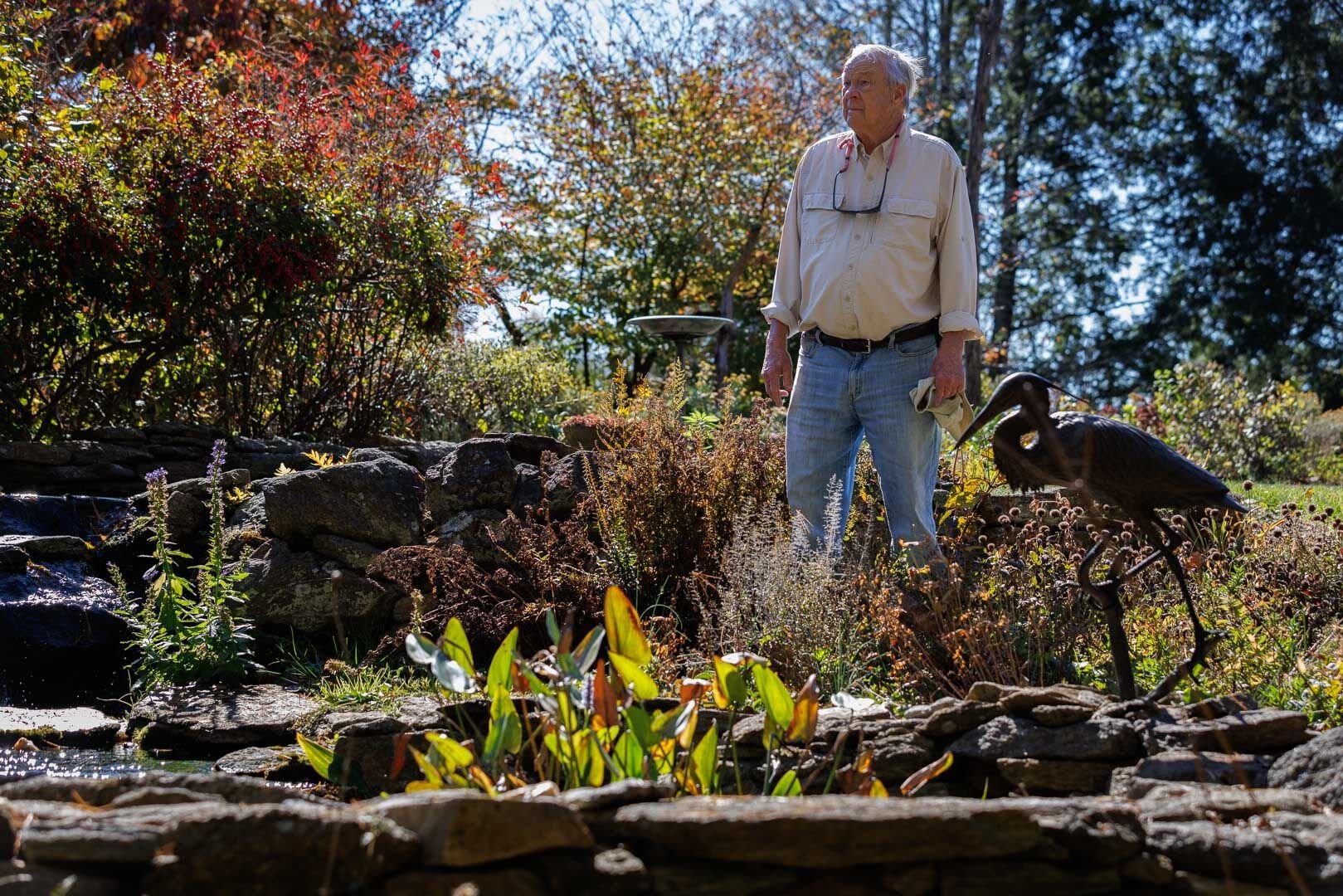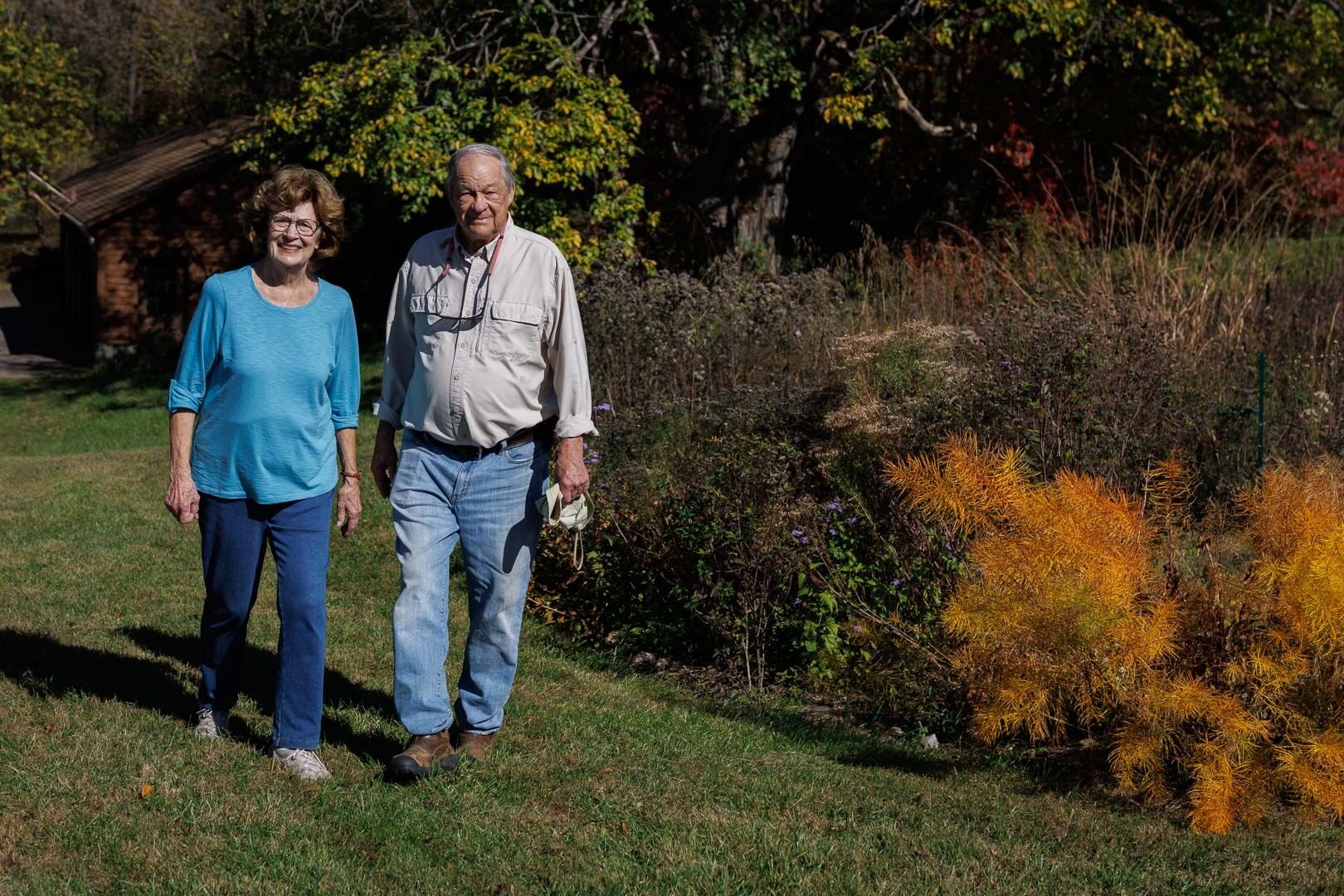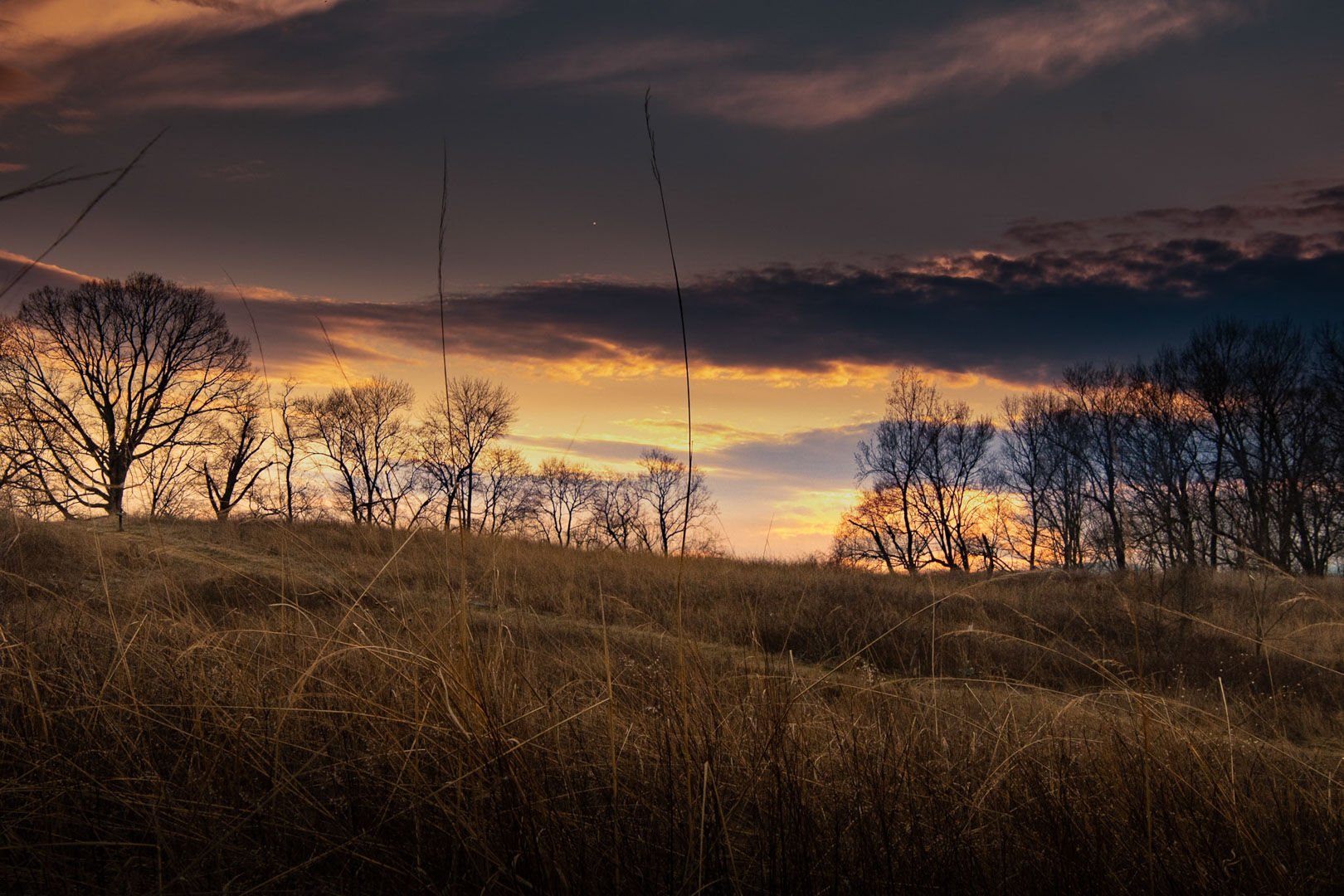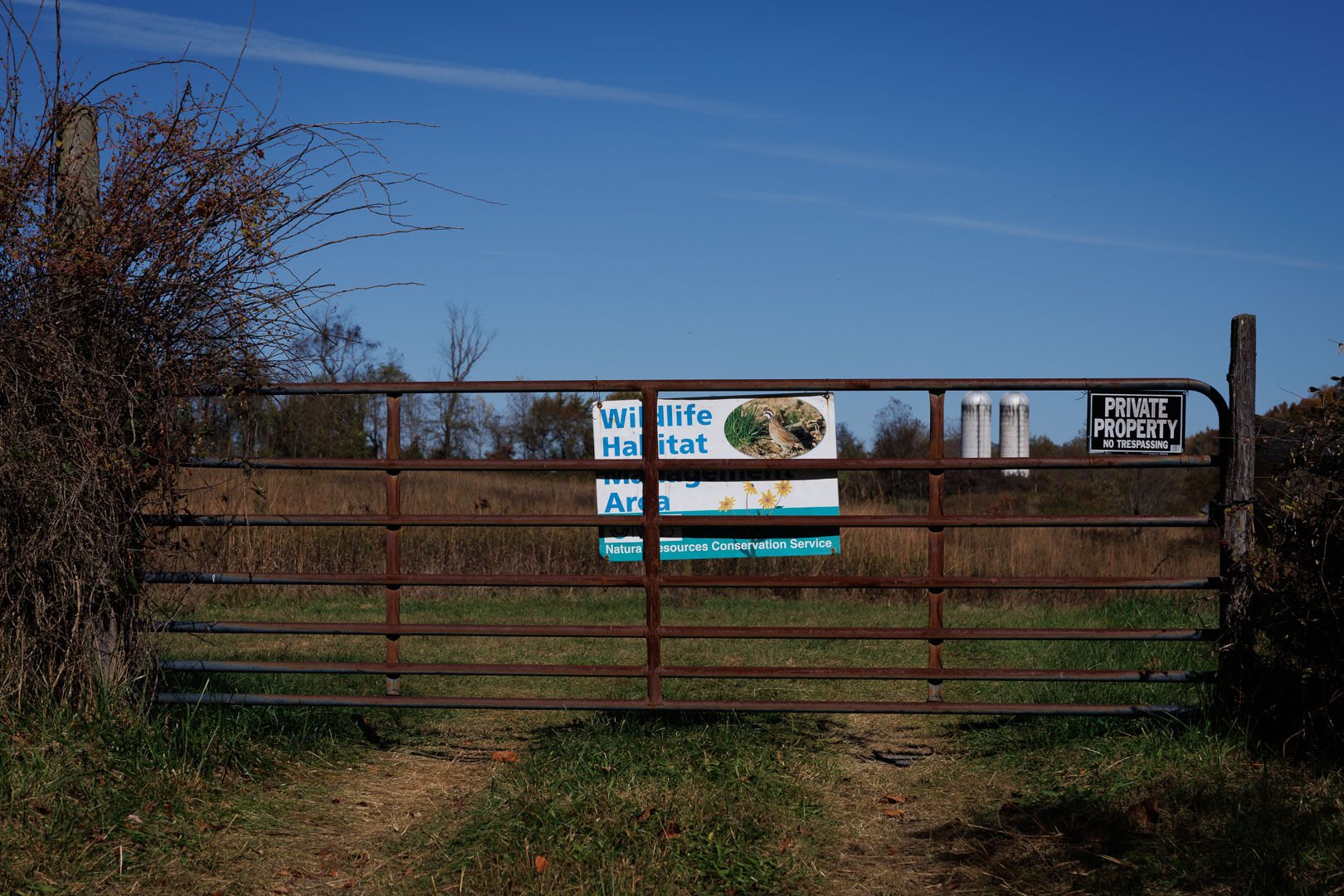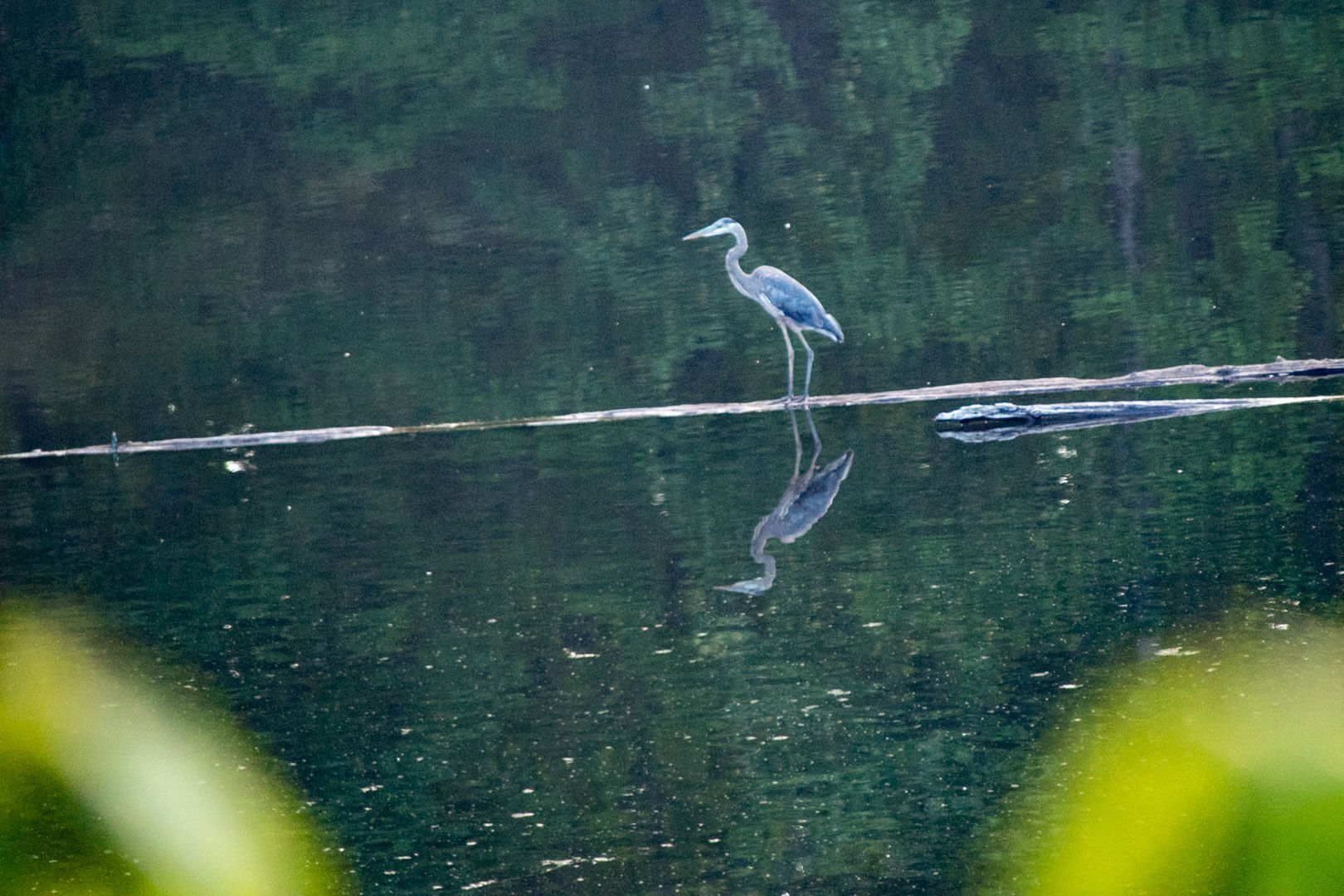Rappahannock couple receives prestigious award
Nestled along Long Mountain Road is one of Rappahannock County’s most precious jewels – the Jones Nature Preserve. Like the county’s motto, “A scenic masterpiece made perfect by nature,” the preserve is an ecological wonder, teeming with diverse plant and animal life.
For over 40 years, Bruce and Susan Jones have labored on their 175-acre property in Washington, turning it into one of the most renowned natural habitats in the Piedmont region. To date more than 800 species of plants, 200 species of birds, 55 species of butterflies, and numerous species of mammals, amphibians, reptiles and insects have been identified on the preserve.

2024-10-25-FF-Jones_Nature_Preserve-2-web.jpg
Bruce Jones overlooks the Jones Nature Preserve, a 175-acre renowned natural habitat in Tiger Valley that he and his wife, Susan, created over the past 40 years. The couple received a prestigious conservation award last week from the Garden Club of Virginia.
In recognition of their work, they received the Garden Club of Virginia’s (GCV) coveted Elizabeth Cabell Dugdale Award for Meritorious Achievement in Conservation last week, at the club’s forum in Martinsville, Va.
“This is a very competitive and prestigious statewide award honoring someone who has made enormous contributions in the field of conservation,” said Beth DeBergh, a GCV member who lives on Harris Hollow Road in Washington. DeBergh along with Carol Hunter, spouse of former Trinity Episcopal Church rector Miller Hunter, nominated the Joneses for the award that has been given annually since 1974.

Jones Nature Preserve (award)3-14-web.jpg
Bruce and Susan Jones receive the coveted Elizabeth Cabell Dugdale Award for Meritorious Achievement in Conservation on Nov. 7 at the Garden Club of Virginia’s forum in Martinsville, Va.
Others who supported the nomination include Piedmont Environmental Council president Chris Miller, University of Delaware professor Doug Tallamy, Virginia Working Landscapes program director Amy Johnson, Rappahannock League for Environmental Protection president Rick Kohler, garden designer, author and lecturer C. Colston Burrell, rector Miller Hunter, Madison County bird data expert Ian Topolsky and Wisconsin plant nursery owner Neil Diboll.
“What makes their efforts so special is they are willing to share their knowledge with just about anyone who wants to learn about native plants and wildlife,” said DeBergh.
A visionary
Tallamy, a nationally recognized expert and author on biodiversity and conservation, met Bruce Jones in 2009, around the time Tallamy’s groundbreaking book, “Bringing Nature Home: How Native Plants Sustain Wildlife in Our Gardens,” sparked a national movement among property owners and backyard gardeners to improve biodiversity on their land.

2024-10-25-FF-Jones_Nature_Preserve-1-web.jpg
Susan and Bruce Jones at their home, Jones Nature Preserve, in Washington, Va.
He called the Joneses “first responders” in the fight to promote greater biodiversity.
“Bruce was a visionary,” said Tallamy, a professor of entomology and wildlife ecology. “He was out there years before many people began to realize we are losing wildlife and native plants to land development, non-native and invasive species and compromised ecosystems.
“I’m a messenger,” Tallamy said, “but it is the people who listen to the message and actually do something about it who make a difference. It takes a ‘Bruce’ in every community to keep this movement growing.”

drone5-web.jpg
Networks of trails crisscross diverse habitats in the Jones Nature Preserve in Rappahannock’s Tiger Valley.
Sarah Hellewell, who chairs the GCV conservation awards committee, echoed Tallamy’s praise.
“The Joneses were transforming their property into a nature preserve in the 1980s and 1990s well before these practices were being widely promoted by conservation groups everywhere,” she said. “The GCV is recognizing them not just for their incredible achievement, but with the hope they will inspire others to follow in their footsteps.”
The beginning
In 1979, Bruce Jones, then a specialist in the ski travel business and Susan Jones, a retired teacher, bought 75 acres along Long Mountain Road as an investment. They were living in Annandale, Va. “We had no plans other than to sell it after about 30 years when we planned to retire,” he said.
A few years later, they decided to put a pond on the property.
“We were from Minnesota, the land of lakes, and we loved the water,” said Susan Jones, an avid gardener and longtime member of the Rappahannock County Garden Club. “Soon thereafter we built a cabin on the property and became weekend residents in 1983.”

Jones Nature Preserve_5-web.jpg
The 175-acre property near Washington is home to 800 species of plants, 200 species of birds, 55 species of butterflies, and numerous species of mammals and other creatures.
The Joneses’ oldest son, Matt, would come out on the weekends for walks in the woods where he observed orchids, trilliums and other native plants.
“Finding those beautiful native plants opened a door for me,” said Bruce Jones.
He walked boldly through that door, joined the Virginia Native Plant Society and began attending seminars, lectures and meetings with experts to learn about native plants, wildlife and the intricacies of ecosystems. “I graduated college with a degree in business administration and went to work in marketing, so I didn’t have a deep understanding of nature,” he said.
Fast forward
By the time the Joneses became full-time county residents in 1998, they began to transform their property into a nature preserve. They added new water features; converted cow pastures to meadows with native warm season grasses, native wildflowers and shrubs; established native woodland and wetland garden areas; and a trail network.

2024-10-25-FF-Jones_Nature_Preserve-10-web.jpg
The Jones Nature Preserve, in Tiger Valley in Washington, Va.
Today their preserve has grown to 175 acres and teems with wildlife, native plants and grasses, pollinators and other insects. In many areas of the property, natural succession among the native plantings is occurring.
Group walks
The Joneses schedule walking tours which run from early spring – when wild ephemeral flowers wake up from their winter slumber and birds are migrating – through summer for butterfly counts, and then again in autumn for the fall bird migration.

Jones Nature Preserve_6-web.jpg
A heron at the Jones Nature Preserve.
“We host about 35 or 40 group walks around the property each year,” said Bruce Jones. “Groups are usually around 10 to 15 people so we can keep it intimate and allow for discussion along the way. Of particular interest are our woodland spring ephemeral plants which put on a dazzling show.”
Conservation organizations such as the Smithsonian’s National Zoo and Conservation Biology Institute, through its program, Virginia Working Landscapes (VWL), Virginia Native Plant Society and The Clifton Institute visit the property to conduct research as well as inventories of birds and plants, soil and pollinators.

2024-10-25-FF-Jones_Nature_Preserve-4-web.jpg
Bruce and Susan Jones host as many as 40 seasonal walking tours a year of their 175-acre nature preserve.
“Because so much land is privately owned, it is important for scientists to be able to work with landowners who want to collaborate and contribute to research,” said Amy Johnson, VWL’s program director. “Being able to access these lands helps give us a more comprehensive picture of ecological trends.”
Constant struggle
It hasn’t been easy. Over the years, the Joneses have spent countless hours of their own time and substantial resources, sometimes using outside contractors, to transform their land back to its native state. “No doubt the habitats we’ve created are sustaining a wide variety of plant and animal life, but it is a constant struggle to fend off invasive plant species which undermine our efforts,” said Bruce Jones, citing examples like autumn olive and ailanthus.
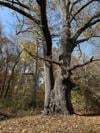
Lincoln tree-web.jpg
Bruce Jones named this black oak, the “Lincoln Tree,” since it dates back to the time of Abraham Lincoln’s presidency, making it one of the oldest in Virginia.
Of particular concern are vines such as Oriental bittersweet and Japanese honeysuckle that kill off native trees like dogwoods and oaks. “A few years ago we removed 40-foot high vines in a number of places and now they are back with a vengeance,” said Susan Jones. “You just have to stay on top of it or you’ll lose your trees.”
As to the future of the nature reserve, the Joneses remain committed to continuing their work.
“We’ve been here for over 40 years, poured our hearts and souls into this place, and have created something we think is quite special,” said Bruce Jones. “At some point we recognize we will have to step back and pass the torch.
“When that time comes, it is our fervent wish that the preserve will continue on into the future and be a place where people can come and experience the wonders of nature,” he said.
Editor’s note: Reporter Bob Hurley also serves on the board of the Rappahannock League for Environmental Protection.

Foothills_logo_10year_horizon
Foothills Forum is an independent, community-supported nonprofit tackling the need for in-depth research and reporting on Rappahannock County issues.
The group has an agreement with Rappahannock Media, owner of the Rappahannock News, to present this series and other award-winning reporting projects. More at foothillsforum.org.


